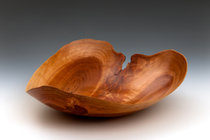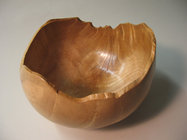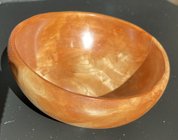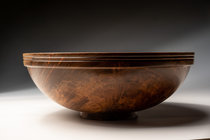Hi Greg, Looks like you've come a long way in a short time.Hi Lyle,
Thanks for great your input. When I turned the "once turned" green bowl, I did not do a shearing cut to clean it up, not sure why but he was helping another student so he either did not want me to or he got distracted and forgot. Now the bowl in the picture is pretty rough due to that and when I cut the tenon off he said to wait until dry to sand it. The other thing about turning green wood is all the sanding and finishing has to be done off the lathe??
How much of a finished product are you talking about?
1. Do you sand it on the lathe?
2. Do you do a shear cut while green?
3. If you don't mind can you post a couple of pics of your bowls that were turned once?
EVERYTHING I turn is green wood to finished piece.
I do all my sanding on the lathe. By the time I turn the green wood to a thin/uniform wall the wood starts drying while I'm turning. I can frequently sand immediately after shaping. Worst case scenario I wait a few hours, go to lunch. Once the surface has dried, I begin sanding so I don't have a problem with clogging the sandpaper. This is done in stages, while still on the lathe. Sand the outside first, sand the inside, reverse mount b/w centers to clean up the foot. Wait again until that dries.....sand the bottom, on the lathe.
The moisture content of the wood does not matter when doing a proper shear cut or shear scrape.....
The bowl will distort when drying, I usually do natural edge bowls that makes it more difficult to notice that it is not round.
Sanding needs to be done at slow speed with sharp sandpaper because of the wobble.
We need to do three things to turn green wood without cracking.
1. No cracks in the blank - that's why I chose to turn green wood
2. NO pith!
3. Uniform wall thickness
If you follow these three rules - you will not have to worry about your final piece cracking.......




